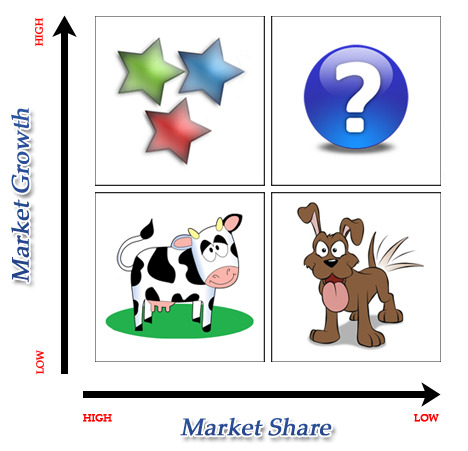The stability grand strategy is adopted by an organization when it attempts at an incremental improvement of its functional performance by marginally changing one or more of its businesses in terms of their respective customer groups, customer functions, and alternative technologies — either singly or collectively E.g: A copier machine company provides better after sales service to its existing customer to improve its company product image, and increase the sale of accessories and consumables This strategy may be relevant for a firm operating in a reasonably certain and predictable environment. Stability strategy can be of three types —No Change Strategy, Profit Strategy, Pause/ Proceed — with — caution Strategy. 1. No-Change Strategy It is a conscious decision to do nothing new. The firm will continue with its present business definition. When a firm has a stable internal and external environment the firm will continue with its present strategy. The firm Continue reading
Strategic Management Concepts
Boston Consulting Group(BCG) Growth-Share Matrix
The BCG matrix (aka B-Box, B.C.G. analysis, BCG-matrix, Boston Box, Boston Matrix, Boston Consulting Group analysis, portfolio diagram) is a chart that had been created by Bruce Henderson for the Boston Consulting Group in 1970 to help corporations with analyzing their business units or product lines. This helps the company allocate resources and is used as an analytical tool in brand marketing, product management, strategic management, and portfolio analysis. Analysis of market performance by firms using its principles has called its usefulness into question, and it has been removed from some major marketing textbooks. Boston Consulting Group (BCG) Matrix is a four celled matrix (a 2 * 2 matrix). It is the most renowned corporate portfolio analysis tool. It provides a graphic representation for an organization to examine different businesses in it’s portfolio on the basis of their related market share and industry growth rates. It is a two dimensional Continue reading
Shell’s Directional Policy Matrix (DPM)
The Shell Directional Policy Matrix (DPM) is another refinement upon the Boston Consulting Group (BCG) Matrix. Along the horizontal axis are prospects for business sector profitability, and along the vertical axis is a company’s competitive capability. Business sector profitability includes the size of the market, expected growth, lack of competition, profit margins within the market and other favorable political and socio-economic conditions. On the other hand company’s competitive capability is determined by the sales volume, the products reputation, reliability of service and competitive pricing. As with the GE Business Screen the location of a Strategic Business Unit (SBU) in any cell of the matrix implies different strategic decisions. However decisions often span options and in practice the zones are an irregular shape and do not tend to be accommodated by box shapes. Instead they blend into each other. Each of the zones in Shell’s Directional Policy Matrix is described as Continue reading
Behavioural Issues in Strategy Implementation
It is vital to bear in mind that organizational change is not an intellectual process concerned with the design of ever-more-complex and elegant organization structures. It is to do with the human side of enterprise and is essentially about changing people’s attitudes, feelings and – above all else – their behavior. The behavioral of the employees affect the success of the organization. Strategic implementation requires support, discipline, motivation and hard work from all manager and employees. Influence Tactics: The organizational leaders have to successfully implement the strategies and achieve the objectives. Therefore the leader has to change the behavior of superiors, peers or subordinates. For this they must develop and communicate the vision of the future and motivate organizational members to move into that direction. Power: it is the potential ability to influence the behavior of others. Leaders often use their power to influence others and implement strategy. Formal authority Continue reading
Strategic Leadership – What Does Strategic Leaders Do?
Concept of Strategic Leadership Strategic Leadership provides the vision and direction for the growth and success of an organization. To successfully deal with change, all executives need the skills and tools for both strategy formulation and implementation. Managing change and ambiguity requires strategic leaders who not only provide a sense of direction, but who can also build ownership and alignment within their workgroups to implement change. Leaders face the continuing challenge of how they can meet the expectations of those who placed them there. Addressing these expectations usually takes the form of strategic decisions and actions. For a strategy to succeed, the leader must be able to adjust it, as conditions require. But leaders cannot learn enough, fast enough, and do enough on their own to effectively adapt the strategy and then define, shape and executive the organizational response. If leaders are to win they must reply on the prepared Continue reading
Levels of International Strategy
The globalization of the economy, internationalization of businesses and emergence of new markets are all key themes in contemporary business. Whereas international business may once have been the province of organisations with sufficient scale and reach, these types of companies — typically multi-national corporations – no longer have a monopoly on this kind of business. Increasing numbers of firms, of varying scale, are confronted with compelling reasons for expanding their activities across multiple national boundaries. In some cases, such motivation includes the knowledge that success in international markets is a pre-requisite for survival; if competitor organisations succeed in international markets, they may achieve the scale and liquidity which affords them sustainable competitive advantage. There are mainly three levels of international strategy. They are; Corporate Strategy Business Strategy Functional Strategies Short description of these three are given bellow, 1. Corporate Strategy: Corporate strategy attempts to define the domain of businesses the Continue reading


